
East Lothian is one of the 32 council areas of Scotland, as well as a historic county, registration county and lieutenancy area. The county was also known as Haddingtonshire.
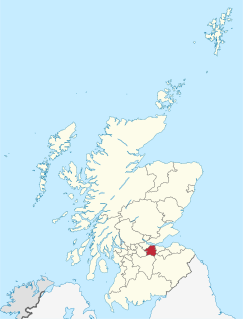
West Lothian is one of the 32 council areas of Scotland, and was one of its historic counties. The county, which was known as Linlithgowshire, was bounded geographically by the Avon to the west and the Almond to the east. The modern council area occupies a larger area than the historic county. It was reshaped following local government reforms in the late 20th century: some areas in the west were transferred to Falkirk; some areas in the east were transferred to Edinburgh; and some areas that had formerly been part of in Midlothian were added.

Dunbar is a town on the North Sea coast in East Lothian in the south-east of Scotland, approximately 30 miles east of Edinburgh and 30 mi (50 km) from the English border north of Berwick-upon-Tweed.

John Muir, also known as "John of the Mountains" and "Father of the National Parks", was an influential Scottish-American naturalist, author, environmental philosopher, botanist, zoologist, glaciologist, and early advocate for the preservation of wilderness in the United States of America.

The Royal Burgh of Haddington is a town in East Lothian, Scotland. It is the main administrative, cultural and geographical centre for East Lothian. It lies about 17 miles east of Edinburgh. The name Haddington is Anglo-Saxon, dating from the sixth or seventh century AD when the area was incorporated into the kingdom of Bernicia. The town, like the rest of the Lothian region, was ceded by King Edgar of England and became part of Scotland in the tenth century. Haddington received burghal status, one of the earliest to do so, during the reign of David I (1124–1153), giving it trading rights which encouraged its growth into a market town.
Aberlady Bay in East Lothian, Scotland lies between Aberlady and Gullane.

The John Muir Trust (JMT) is a Scottish charity, established in 1983 to conserve wild land and wild places for the benefit of all. The Trust runs an environmental award scheme, manages several estates, mainly in the Highlands and Islands of Scotland and campaigns for better protection of wild land. In 2017, it took on a lease to manage Glenridding Common in the English Lake District.

Prestonpans is a small mining town, situated approximately eight miles east of Edinburgh, Scotland, in the unitary council area of East Lothian. The population as of 2020 is 10,460. It is near the site of the 1745 Battle of Prestonpans. The town, established in the eleventh century, has a variety of important historical architecture, including: Preston Tower and the doocot and the local Mercat Cross, which is the only one of its kind in Scotland that remains in its original form and location. Prestonpans is "Scotland's Mural Town", with many murals depicting local history.

Armadale is a town within the county of West Lothian in the Central Belt of Scotland. It lies to the west of Bathgate and to the east of Blackridge. Armadale, formerly known as Barbauchlaw, is an ex-mining town which was also known for its brick manufacturing. It is named after Armadale in Sutherland, this estate being owned by Sir William Honeyman who later acquired the land of Barbauchlaw. Primarily a residential community, the town has a number of different public places, a central Mains Street and a series of parks, green spaces and nature reserves, many of which lie atop former mines and industrial areas.

The John Muir Country Park is a country park near the village of West Barns, which is part of the town of Dunbar in East Lothian, Scotland. It is named after John Muir, a famous naturalist and geologist who was born in Dunbar and later emigrated to the United States, where he developed his ideas.
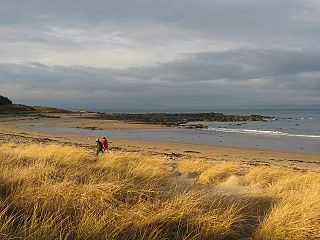
Yellowcraig, less commonly known as Broad Sands Beach, is a coastal area of forest, beach and grassland in East Lothian, south-east Scotland. Yellowcraig is partly within the Firth of Forth Site of Special Scientific Interest (SSSI). It is bordered to the north by the Firth of Forth, to the south by the village of Dirleton and Dirleton Castle, to the east by the North Berwick West Links golf course, and to the west by the Archerfield Estate and Links golf courses.

Linlithgow is a town in West Lothian, Scotland. It was historically West Lothian's county town, reflected in the county's historical name of Linlithgowshire. An ancient town, it lies in the Central Belt on an historic route between Edinburgh and Falkirk beside Linlithgow Loch. The town is situated approximately 20 miles west of Edinburgh.
John Muir (1838–1914) was a Scottish-born American environmentalist and author.
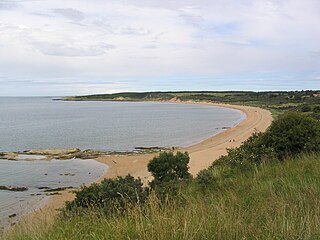
The John Muir Way is a 215-kilometre (130 mi) continuous long-distance route in southern Scotland, running from Helensburgh, Argyll and Bute in the west to Dunbar, East Lothian in the east. It is named in honour of the Scottish conservationist John Muir, who was born in Dunbar in 1838 and became a founder of the United States National Park Service. The route provides a coast-to-coast route across Scotland, linking Muir's birthplace with Scotland's first national park, Loch Lomond and The Trossachs, and Helensburgh, from where he left Scotland for the United States. It is suitable for walkers and cyclists although some sections are on rougher terrain and may not be suitable for road bicycles.
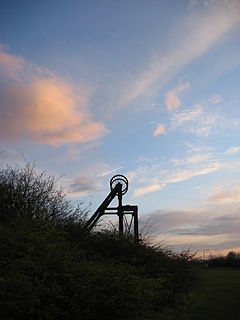
Prestongrange Museum is an industrial heritage museum at Prestongrange between Musselburgh and Prestonpans on the B1348 on the East Lothian coast, Scotland. Founded as the original site of the National Mining Museum, its operation reverted to East Lothian Council Museum Service in 1992.

The Firs in Lower Broadheath, Worcestershire, England was the birthplace of Edward Elgar. The cottage now houses a museum administered by the National Trust. Edward Elgar was born at the house on 2 June 1857, and lived there for the first two years of his life. The museum comprises the Birthplace Cottage and its garden, and the modern Elgar Centre, opened in 2000, which houses further exhibitions and a function room.
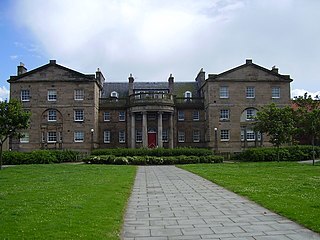
Lauderdale House, formerly Dunbar House and then Castle Park Barracks, was a private house and then a military installation in Dunbar, Scotland. The building, which is now used as private residential accommodation, is a Category A listed building.
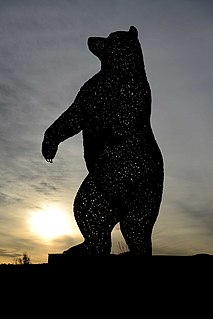
The DunBear is a giant five-metre-high steel sculpture of a brown bear standing on its hind legs. The public artwork is located immediately adjacent to the A1 at DunBear Par, Dunbar in East Lothian, Scotland. This proposed low carbon community is part of the Hallhill development and is being progressed by the landowner, Hallhill Developments Ltd. Erected in November 2019, The DunBear is a tribute to John Muir, the Dunbar-born naturalist and conservationist. Muir is known as "Father of the National Parks" due to his role in the establishment of National Parks in the US, including Yosemite and Sequoia National Parks.

The Dunbar Town House, also known as Dunbar Tolbooth, is a municipal structure in the High Street in Dunbar, East Lothian, Scotland. The building, which currently operates as a museum, is a Category A listed building.


















